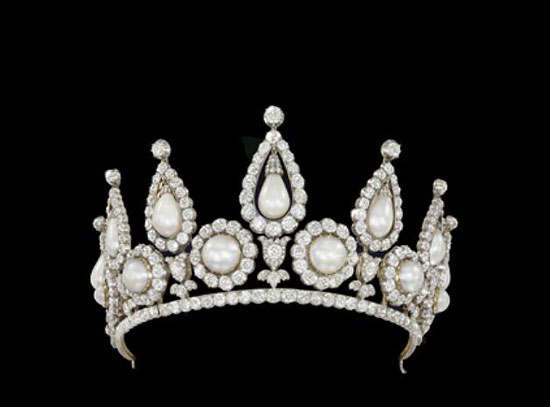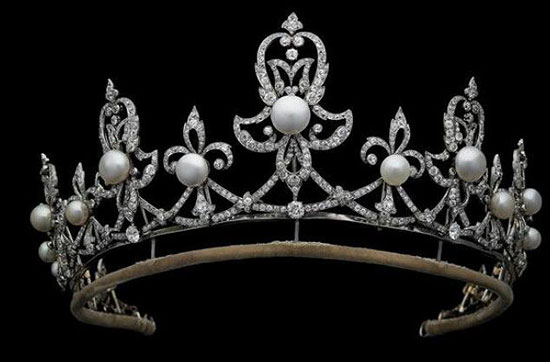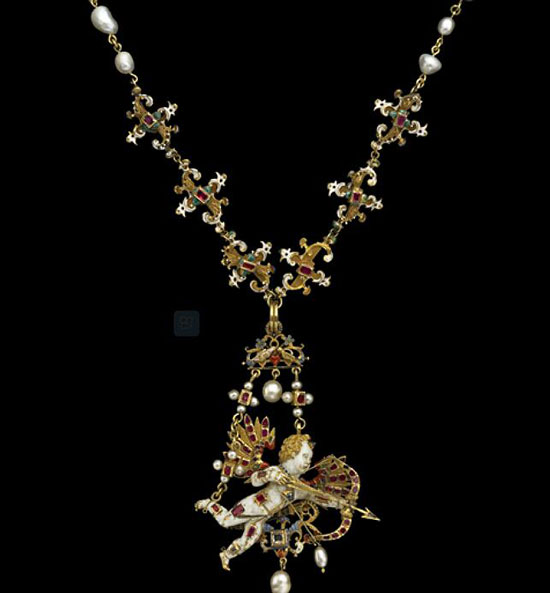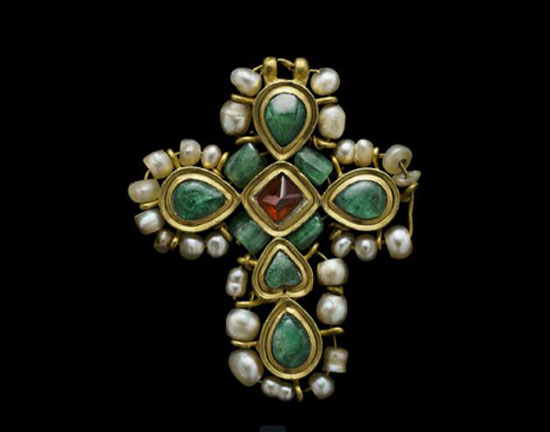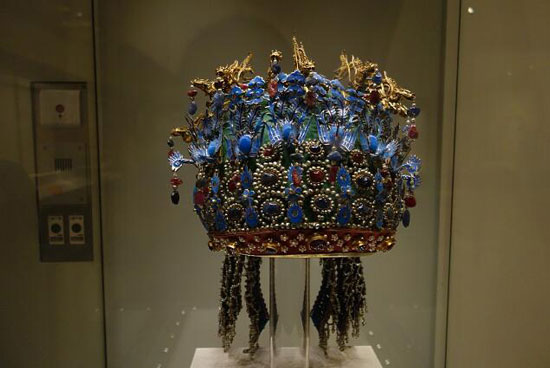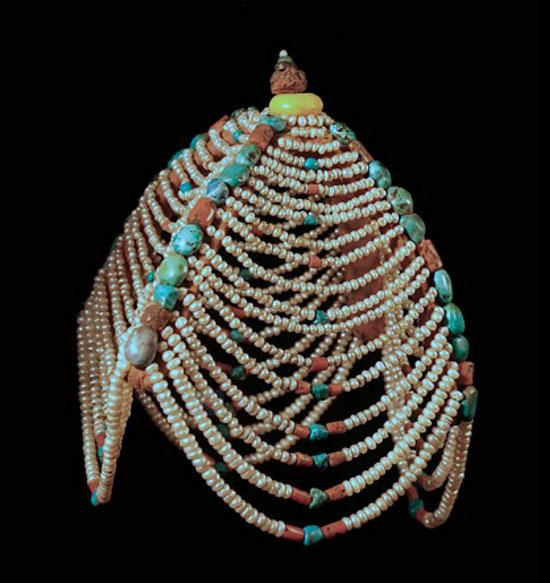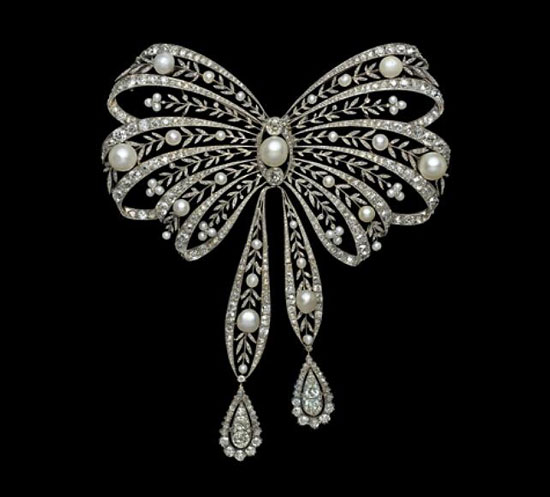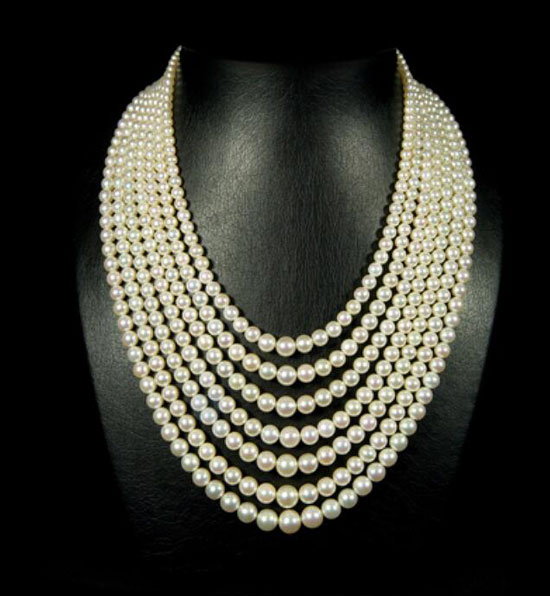The Evolution of Pearls - Talking from the Pearl of Qatar Bay
Pearls with a rounded appearance and natural color are the only ones of all kinds of beautiful gemstones that can neither be cut nor polished to be used for decoration, so they are also called pearls. For thousands of years, no matter what, the thinking and exploration around the pearl has never stopped. From September 27, 2016 to January 8, 2017, the National Museum of China and the Qatar Museum Administration and the 2016 China Card Cultural Year will be held together with the “Pearls: Treasures from the Rivers and Oceans†exhibition launched by Guobo. The history of the use of pearls by humans has unveiled the mystery of pearls. The 19th century British Lady Rothbury "Pearl Crown", Qatar Museum Authority From the east to the west With regard to the production of pearls, many beautiful legends have been born around the world: Indian mythology believes that pearls are formed by the drops of dewdrops falling into the oyster shells that breathe out of the sea; the ancient Greeks believed that the pearls were aquatic shellfish and were lightning The result of a sudden hit; Danish mythology believes that pearls are the tears of the mermaid; people in the Gulf region are boldly guessing that pearls are created to wrap a grain of sand; Chinese mythology is also full of romance - the legendary prostitute living in the South China Sea The moon night, the moon sheds, the tears that flow down become pearls... These legends undoubtedly add a mysterious color to the pearls, and also combine the regional culture to derive many symbolic meanings, beautify and Full of people's lives. Modern research has shown that parasites invade shells accidentally, which is the source of most pearls. In fact, all mollusk shellfish can produce pearls, even snails. Countess Spencer's head crown about 1890 Natural pearls were discovered and utilized about 7,000 years ago. The earliest history and collection of large-scale natural pearl producing areas are most famous in China's South China Sea, the Gulf region of West Asia and Mannar Bay in India. Due to the probabilistic nature of natural pearls and the capture of thousands of shells to obtain a high-quality pearl, coupled with the dangers of pearl collection, pearls are extremely precious at the beginning of their application, mostly royal. The idioms of China's "Pearl of the Pocket" are also inclusive of the precious meaning of the pearl. Europeans began to understand pearls. In the ancient Greek period of the 4th century BC - during the conquest of Persia and India by King Alexander of Macedonia, pearls and their decorative fashions were introduced to Europe from the East. Pearls were regarded as a symbol of love and beauty. . For more than two centuries, the Alexander Empire and its successors, the Ptolemy dynasty and the Seymour dynasty, successively ruled the Gulf region and the entire Asian coast, ensuring that pearls are continuously transported from the East to the Western world. Flying Cupid Pendant Necklace In the first century AD, after the ancient Roman Empire replaced the ancient Greeks to dominate the Mediterranean, the appreciation of the pearls would be carried forward, and the pearls would be inlaid in small gold jewelry to achieve the same effect. At that time, the upper class had a very clear standard for the grade and quality of pearls. In the Middle Ages, Gulf Pearl continued to flow into Europe through trade with Islamic countries, Byzantium and Venice, and the status of pearls was further enhanced. Pearls symbolize the Virgin Mary with its loyalty and purity, and symbolize the Savior with its perfection. Jesus, not only for the kings and queens, but also for the identity of the religious protectors in the kingdom; and often used to decorate churches and become church treasures. The crusade's eastward movement allowed the Europeans to pluck a large number of novelty items, including pearls, from the east. The pearls seemed to be a versatile sacred product, which complemented any metal and gemstone. Since then, the pearl's craze in Europe has opened. After the discovery of the New World, Oceania and the Pacific coast of the Americas were once important natural pearl producing areas. As pearl raw materials are more easily obtained, and people's understanding of pearls deepens, the use of pearls is further expanded in continuous use, and gradually developed into a popular decorative fashion in the world, becoming the "Queen of Jewelry". . Byzantine Emerald Cross Necklace Pendant The trend has changed since ancient times In China, the history of pearls used as decoration can be traced back to the beginning of the Zhou Dynasty. According to the book "Guizhi Jingyuan·Makeup Table", Zhou Wenwang used to decorate the hair with pearls. After the Qin and Han dynasties, the pearl jewelry quickly became popular, and the emperor would be proud of the pearl decoration. The best example is the dragon crown and phoenix crown of the Ming Dynasty calendar unearthed in Dingling, Beijing. It is decorated with natural pearls of different sizes, showing the world the luxury of ancient palace crafts, such as the filial piety of the National Museum of China. The Queen's "Kowloon Jiufeng" crown (see Figure 1), the dragon and phoenixes have jewels containing pearls, and the crown is more than 5,000 pearls. In the Qing Dynasty, the royal love of natural pearls was clearly at its extreme. The robes of the Daoguang period of the Qing Dynasty, the nine dragon patterns on the front and the back are embroidered by tens of thousands of natural freshwater pearls. Emperor Xiao Duan’s "Kowloon Jiufeng" crown In China's Tibet region, all pearls are produced in the Danshui River, and some are from distant Russia, so they are more precious. As a rare gemstone, pearl has become an indispensable part of the Tibetan people's life and religious activities. It plays both decorative and status. For example, the male earrings in the form of pearls are the ornaments worn by senior religious officials, and the pearls of the ladies are also a clear sign that distinguishes them from the civilian population. Tibetan pearl headdress In Europe, after 1530, many countries began to legislate for pearls, stipulating that people must wear pearls according to their social status and status. In the sixteenth to seventeenth centuries, known as the “Pearl Age of Europeâ€, pearls, like other gems, became the symbol of aristocratic men and women to show off their wealth and status. During this period, many pearl-related legends emerged. For example, the Queen of England and Ireland, Elizabeth I, who is known as the "Queen of the Virgin", regards pearls as a symbol of loyalty and purity, often in the hairpin and into pearls. Wear a long pearl necklace with long knees. As a decoration of luxury jewelry and gorgeous dresses, the number of pearls greatly exceeds that of other jewelry. At the same time, many exquisite pearl ornaments were created in that era and later in the 18th to 19th centuries. The most striking thing is the crown of different forms. For example, the six pearl crowns exhibited in this exhibition are the highlights of the king's supremacy. Whether it is a round or a drop-shaped pearl, the natural pearls embedded in the crown are the largest, surrounded by thousands of diamonds. To make the entire crown dazzling. Some crowns can also be transformed into pearl necklaces or diamond hair bands, brooches, etc., reflecting the designer's originality. Diamond brooch The development of the European Renaissance has allowed pearl jewelry to spread further among all social classes. At this time, the decoration of jewelry is no longer limited to the interpretation of wealth and status, and begins to pursue the harmony of the human body, clothing and accessories. The pearl pendant is hung on the necklace as the most common decoration. At the same time, some famous painters and sculptors participated in jewelry design. The application of irregular Baroque pearls in jewelry became one of the characteristics of this period. The emerging artists used the shaped pearls with other materials in the popular pendants. , to achieve a natural effect, giving it a unique charm. Over time, in the nineteenth century, pearls attracted the attention of the industrial bourgeoisie and became an important part of the booming jewellery industry. Pearls appear in famous jewellery brands, leading people to the beauty, the fashion of good, enduring. The surge in demand for pearls has led to overfishing of large pearl oysters in the Pacific, and high-quality pearls have rarely been discovered since then; the fishing industry in the Gulf region also ended in overfishing in the early twentieth century. . Pearl necklace Although the fishing industry has declined, the craze for pearls has not stopped. In order to meet the increasing demand for pearls, freshwater pearls produced by rivers and rivers in Germany, Scotland, Russia and other regions have entered the historical arena. To this day, most of the freshwater pearl mites are also on the verge of extinction. The artificially cultured pearls have begun to conquer the world, and the decorative style of pearls has become more diverse. Among them, China's contribution to the world's pearls cannot be ignored. China has a long history of pearl collection. The Han Dynasty began to divide the Pearl District into two parts. The Song Dynasty invented the method of breeding pearls. During the Ming and Qing Dynasties, the development and utilization of pearls reached its peak. In the 20th century, the cultivation of freshwater pearls was carried out. Based on this, a wide range of pearl farming projects have been implemented. Today, China produces about 2,000 tons of cultured pearls each year, and even provides incredible purple jewel-grade pearls for the world market, satisfying people's constant pursuit of fashion. Looking back at history, it is not difficult to find people's love for pearls, except for its external beauty, but also because of its aura derived from life. The pearl was originally a tempering of life and a gift from nature. For this reason, the occasional nature in nature will produce such a wonderful legend, and the early diving of the pearl-seeking pearls has become a pursuit of God and moral achievement. symbol of. Although today's cultured pearls continue the beauty of pearls, the natural pearls disappeared due to over-exploitation, so that the recycling of antique jewellery is now almost the only source of natural pearls, and it has undoubtedly become a sad song of human history. This comes from the treasures of the rivers and oceans. Isn’t it really a tear in nature?
We specialize in creating comfortable Women Jodhpurs, selected high-quality fabrics, classic pant shape, comfortable to wear, suitable for wearing when riding, you can choose according to your preferred size, we also have different colors for sale, multi-color available Choose, mix and match at will, if you are interested, you can contact us.
Women Jodhpurs,Female Horse Riding Tights,Horse Riding Leggings,Equestrian Clothing Breeches Guangzhou Muxin Sporting Goods.Ltd. , https://www.muxinsports.com